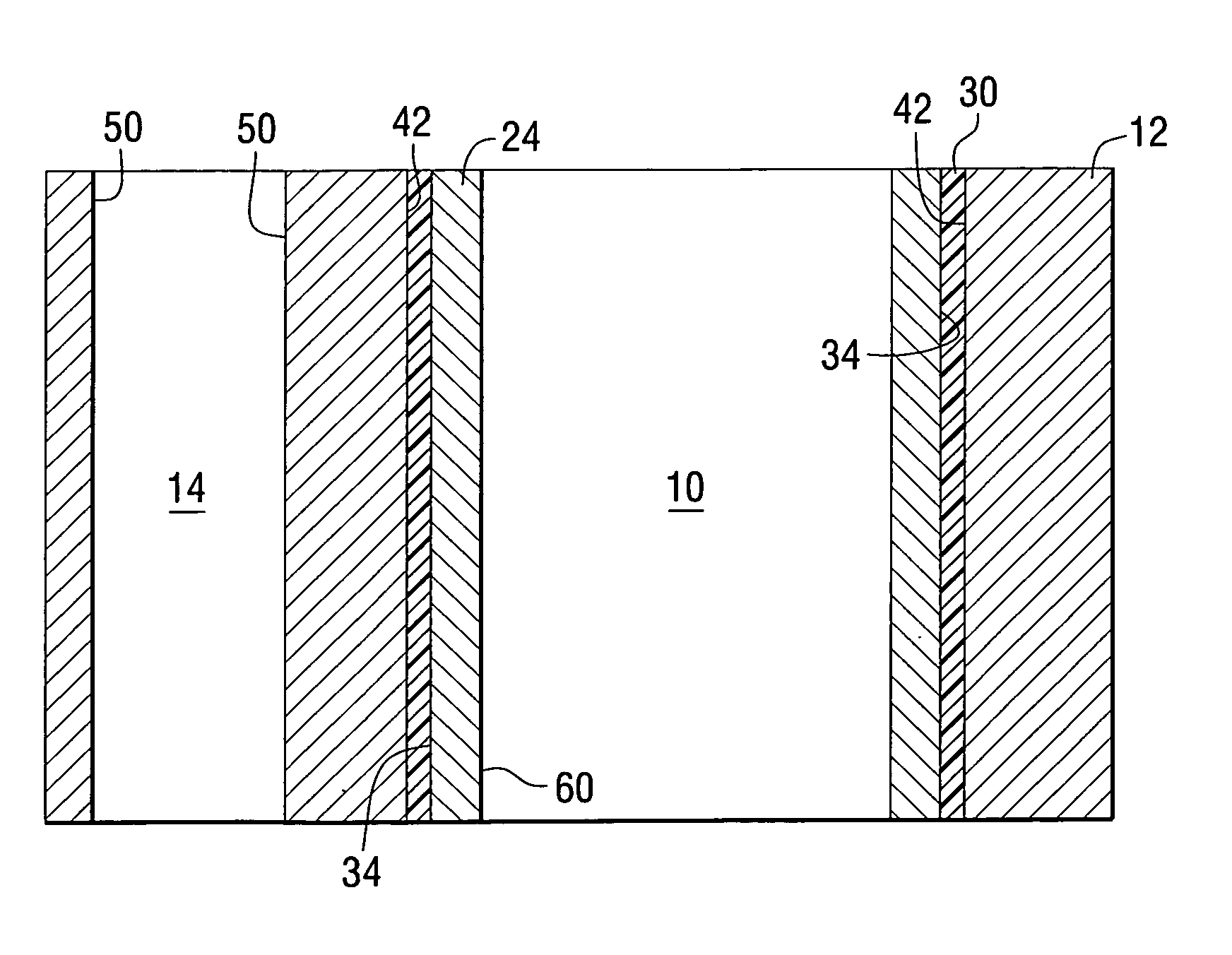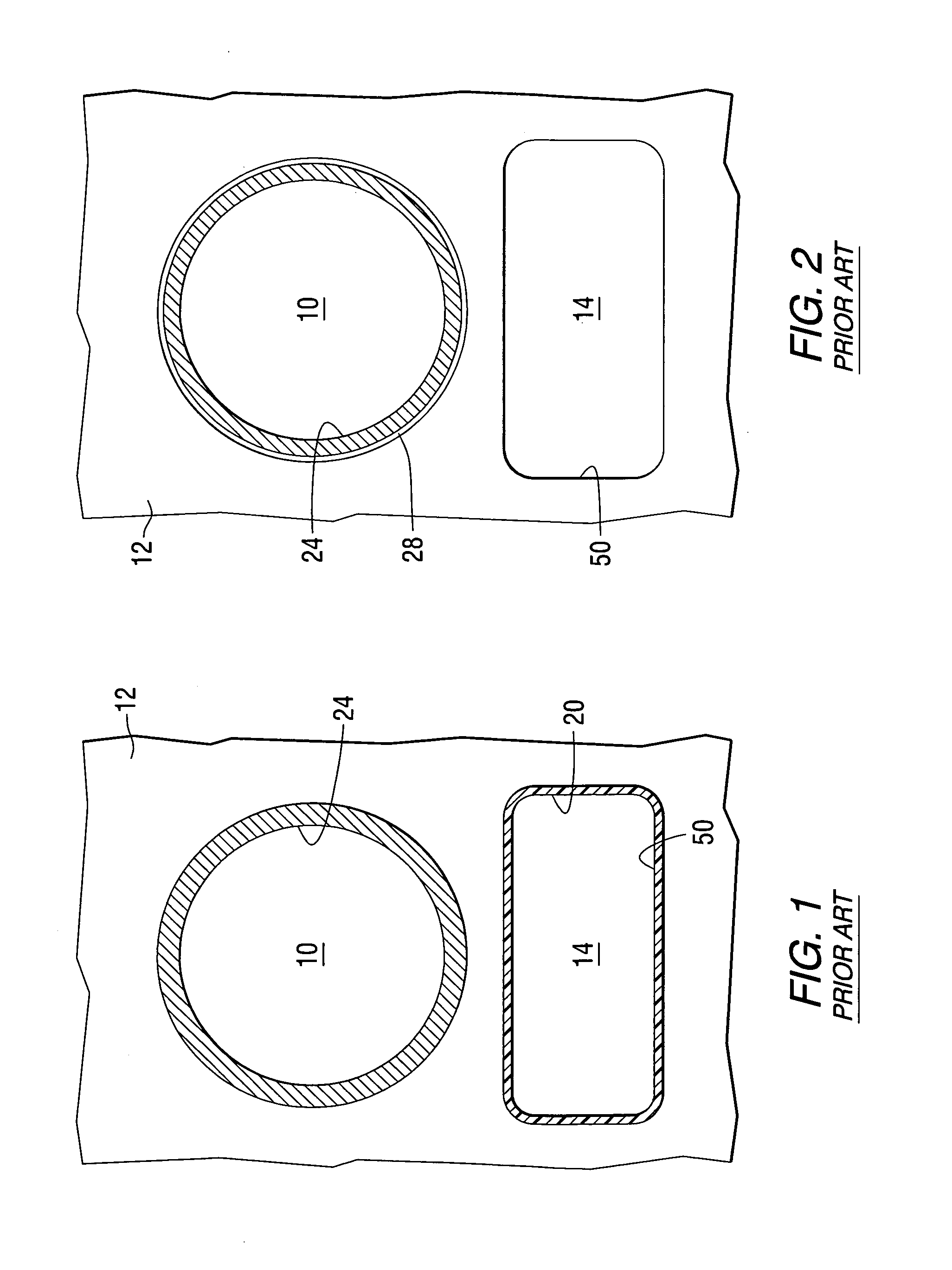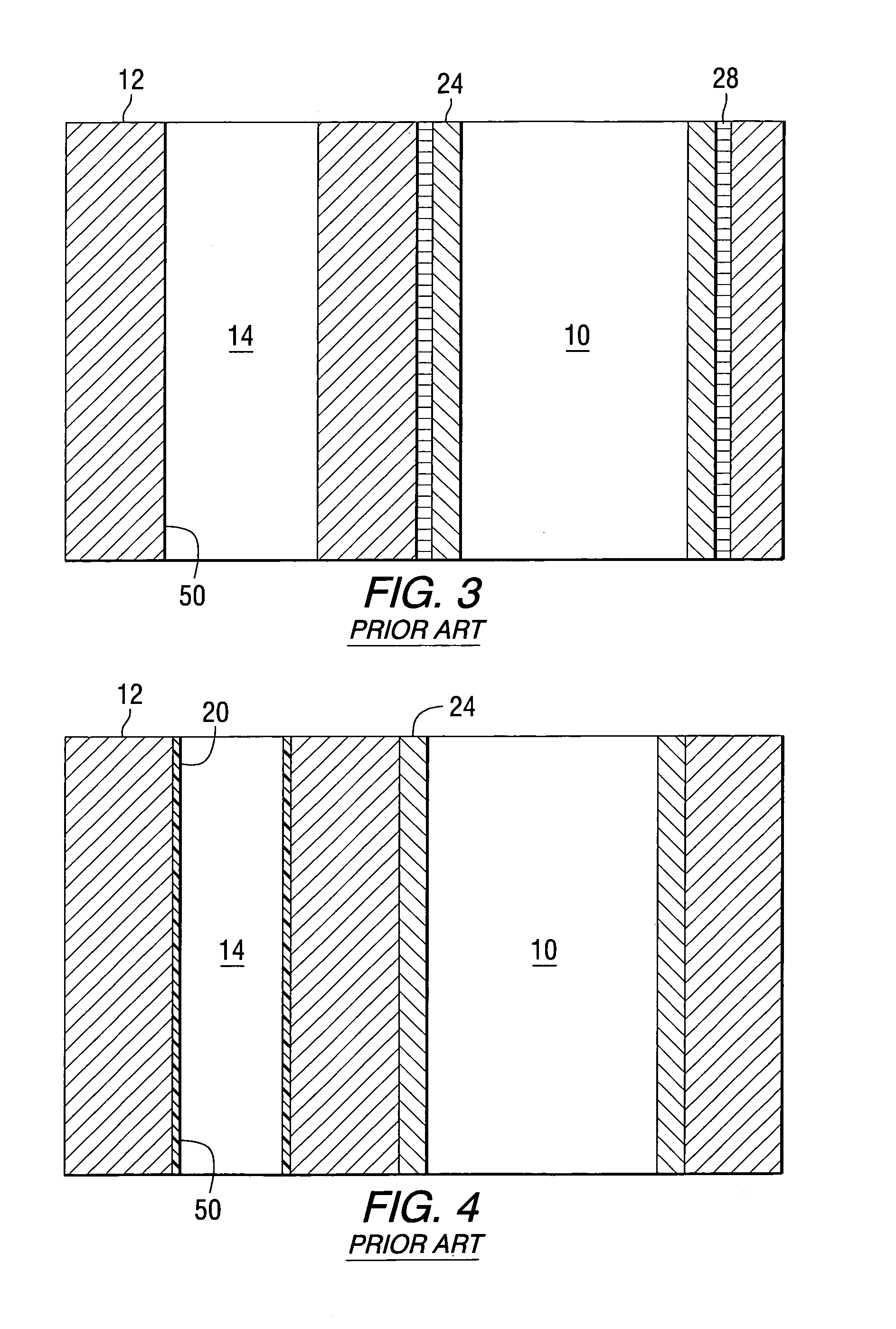Insulated cylinder liner for a marine engine
a technology for marine engines and cylinder lines, which is applied in the direction of cylinders, machines/engines, mechanical equipment, etc., can solve the problems of affecting the thermal conductivity clogging of the cooling channel, and open cooling system
- Summary
- Abstract
- Description
- Claims
- Application Information
AI Technical Summary
Benefits of technology
Problems solved by technology
Method used
Image
Examples
Embodiment Construction
[0029]Throughout the description of the preferred embodiment of the present invention, like components will be identified by like reference numerals.
[0030]FIGS. 1 and 2 are simplified schematic representations of two systems that have been used to address the problems described above with the intent of increasing the temperature differential between the cooling liquid flowing through cooling channels of the engine and the internal temperatures of the cylinder.
[0031]In FIG. 1, cylinder 10 is schematically shown formed within the body 12 of an engine block. A cooling channel 14 is shown formed within the engine block near the cylinder 10. The purpose of the cooling channel 14 is to remove heat from the engine block 12 which is generated in the cylinder 10. In FIG. 1, a coating 20 is provided on the internal surface of the coolant passage 14. In certain known applications, this coating 20 is an electro-deposited paint (EDP) in which an epoxy based paint is deposited on all of the inter...
PUM
| Property | Measurement | Unit |
|---|---|---|
| thickness | aaaaa | aaaaa |
| temperature | aaaaa | aaaaa |
| temperature | aaaaa | aaaaa |
Abstract
Description
Claims
Application Information
 Login to View More
Login to View More - R&D
- Intellectual Property
- Life Sciences
- Materials
- Tech Scout
- Unparalleled Data Quality
- Higher Quality Content
- 60% Fewer Hallucinations
Browse by: Latest US Patents, China's latest patents, Technical Efficacy Thesaurus, Application Domain, Technology Topic, Popular Technical Reports.
© 2025 PatSnap. All rights reserved.Legal|Privacy policy|Modern Slavery Act Transparency Statement|Sitemap|About US| Contact US: help@patsnap.com



